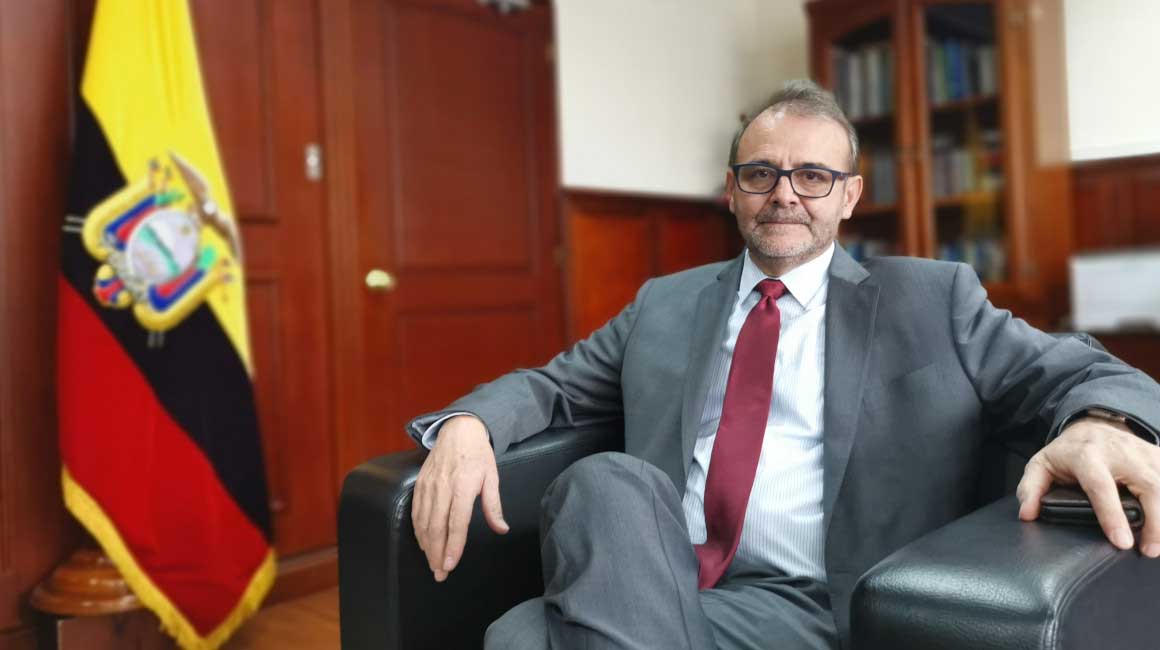How China expanded its influence in Ecuador
By Julieta Pelcastre
China’s growing influence in Ecuador is leaving its mark in critical areas such as natural resources, security, and infrastructure, mainly due to Chinese loans that jeopardize the country’s strategic resources in the long term and to the  lack of transparency, Central American think tank Expediente Abierto indicated in a recent report.
lack of transparency, Central American think tank Expediente Abierto indicated in a recent report.
When Ecuador was cut off from the international financial system in 2009, it received loans from Chinese state-owned and commercial banks, tied to conditional purchase of Chinese goods and services and the monopolization of Ecuador’s oil production, as well as the use of Chinese companies for infrastructure and security projects, the report indicated.
Beijing provided Quito with more than $24 billion in bilateral credits, representing an unprecedented amount of loans for the Andean country. Ecuador’s debt to China became the Andean country’s largest, Ecuadorian journalist and former presidential candidate Christian Zurita says in his book, The Secrets of Chinese Debt.
 “During the government of Rafael Correa, relations between the two countries underwent an important change. Beijing sought to expand its influence in the region and saw Ecuador as a strategic objective, of course benefiting China,” Sergio Cesarin, coordinator of the Center for Asia-Pacific and India Studies at the Tres de Febrero National University in Argentina, told Diálogo on May 20.
“During the government of Rafael Correa, relations between the two countries underwent an important change. Beijing sought to expand its influence in the region and saw Ecuador as a strategic objective, of course benefiting China,” Sergio Cesarin, coordinator of the Center for Asia-Pacific and India Studies at the Tres de Febrero National University in Argentina, told Diálogo on May 20.
According to Expediente Abierto, Ecuador ensured a steady flow of resources to China, committing barrels of oil through long-term sales and credits. This allowed Chinese firms to monopolize the purchase and commercialization of Ecuadorian oil, obtaining contracts and concessions for exploration and exploitation of oil and mining blocks.
The value of the barrels exceeded Chinese advances and credits, creating a financial imbalance in favor of Beijing.
The secrets of Chinese Debt reveal that Ecuador’s advance sale of oil was used by China for commercial purposes, rather than to satisfy an energy demand, as the oil never reached Asia. Instead, most of it was sold to U.S. companies.
“Oil has been, is, and will continue to be a crucial variable in Chinese exports and investments in Ecuador,” Cesarin said. “In addition, oil-related contracts and concessions are shrouded in secrecy throughout the different governments.”
The debate over guarantees for oil supply remains relevant in Ecuador, highlighting the “almost absolute dependence on very strong sovereign concessions with China,” Cesarin said. “This situation, together with power asymmetries, puts Ecuador in a complicated position to limit Chinese influence.”
In addition to oil, the relationship between Ecuador and China is experiencing a worrying increase in illegal mining and illicit gold trade, the Organization of American States (OAS) indicated in a report. In 2019, Ecuador exported nearly four times as much gold as Colombia and Peru combined, with the vast majority going to China.
The report highlighted a significant discrepancy in the value of these exports, suggesting possible irregularities in trade flows. Ecuador recorded exporting $76.6 million in gold to China in 2019, while Beijing reported received $339.2 million, an amount that suggested the commercialization of illegal gold and that led Quito to declare illegal mining a threat to national security.
According to The secrets of Chinese Debt, the Chinese financing model for infrastructure projects in Ecuador was marked by Chinese banks control from the initial stages of negotiation, imposing conditions such as contracting Chinese state-owned companies and applying the sovereign immunity clause.
After 2017, lending activities with China increased, Expediente Abierto said, but many projects ran into serious implementation problems and were plagued with flaws.
Paulina Garzón, director of Ecuadorian nongovernmental organization Latinoamérica Sustentable, expressed her concern, stating that “all Chinese flagship projects are illegal, conflictive, and with dubious economic results,” she told environmental news site Mongabay in May 2023.
A case in point is the Coca Codo Sinclair Hydroelectric Power Plant, a controversial Chinese project in Ecuador inaugurated in 2016. Designed to meet a most of Ecuador’s electricity demand for decades to come, the work faces challenges such as fissures in the powerhouse’s distributor pipes and threats of erosion, Latinoamérica21 reported on April 10. In addition, engineering mistakes and poor planning, have led unprecedented erosion on the Coca River.
Despite multiple repair attempts the cracks persist as well as more recent problems involving poor siltation filtration, creating uncertainty about long-term solutions. Eight years later, the project has still not been formally accepted by the Ecuadorian government, highlighting the complexity and consequences of these technical and administrative difficulties, Latinoamérica21 reported.
“Ecuador exemplifies how several of the strategies that China applies in Latin America are replicated: loans that generate situations close to default, forcing the recipient country to grant more; the imposition of secret conditions in contracts involving natural resources; and the displacement of indigenous cultures and population,” commented Cesarin.
__________________
Credit: Dialogo

















